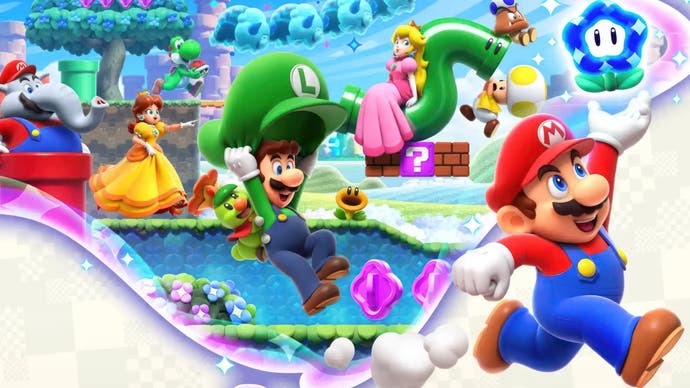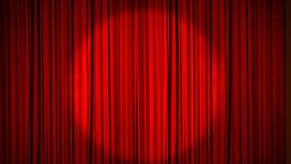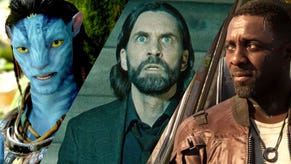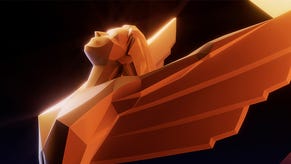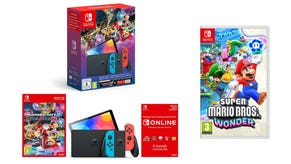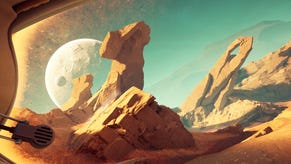Super Mario Bros. Wonder: an incredible game that shows perfect mastery of Switch hardware
The Digital Foundry tech review.
The original Super Mario games stand amongst the most important and influential video games ever created, but after the series shifted to the third dimension, Mario's side-scrolling adventures never quite reached the same heights. Now, for the first time since 1995, at least in my opinion, the magic of 2D Mario lives again in Super Mario Bros. Wonder.
This magical adventure perfectly encapsulates everything that makes Mario great - top-tier platforming gameplay with exceptionally creative level design paired with beautiful visuals and a catchy soundtrack. It looks, sounds and plays like a dream - but you could arguably offer similar endorsements of Nintendo's successful New Super Mario Bros series, which enjoyed four entries across multiple platforms and sold millions. These are good games, but for some of us they never fully clicked.
Therefore, today I'd like to explore Super Mario Wonder, both on its own merits and in contrast to what came before, to hopefully demonstrate why I think this is the best 2D Mario adventure since Yoshi's Island. Of course, we'll cover the technical landscape as well - this is Digital Foundry after all.
I'd consider myself a connoisseur of the platforming genre and, having bested hundreds of platformers over the years, I've developed my own criteria for describing the truly great side-scrollers. It comes down to these four elements:
- Core gameplay mechanics - this includes character movement and the satisfaction derived from engaging with said character.
- Level design - layouts and pacing of challenges.
- Visual design - while gameplay may be king, an attractive and well-animated experience draws you further into the game world.
- Music - a truly great platformer demands an enjoyable, catchy soundtrack.
How does Super Mario Wonder fit into these categories and stack up against other Mario titles? Let's begin with the core gameplay mechanics. No two Mario games feel exactly alike but, for my money, I've always been partial to Super Mario World's precise controls. The speed and precision possible in this game remains captivating even today.
With Super Mario Wonder, Nintendo has created something that feels somewhere between the ultra-precision of World and the heavier Super Mario Bros. 3. It feels snappy and responsive, but there is just enough weight behind Mario's movement to enhance that feeling of momentum. Running across the game's worlds feels great. All the basic actions are fun to use and there is an inherent satisfaction in just playing the game - something critical in a platformer.

They've also freshened up the move set - aside from the fire flower, Mario Wonder boasts a slew of entirely new power-ups with their own capabilities. The elephant is well-known from the trailers, controlling more like you'd expect Wario to, but the bubble cap and drill cap provide entirely new gameplay opportunities.
When playing through the game, it was instantly clear that Wonder felt more responsive to play compared to the four New Super Mario Bros games, so I decided to examine this aspect more closely - and the results were surprising.
I initially discovered that the standing jump is virtually identical between Wonder and New Super Mario U. Press the button and they both reach the apex of their jump at the same point before dropping back down. I tested other scenarios and found that they were similar too, yet I could feel there was a difference - so what's going on? It turns out there's one big change that has a significant impact on the feel of the game - momentum.
In short, Mario maintains momentum much longer in the New Super Mario Bros games versus Mario Wonder. It is specifically this element which lends the New series that heaviness people complain about. Adjusting to the scenery and making precise maneuvers simply feels more satisfying in Wonder as a result - at least to me. That increase in responsiveness is key, but it's not the only major upgrade over the previous 2D Mario titles - so let's talk about the the game's presentation.
The visuals in Super Mario Wonder are bursting with color and personality, and we'll discuss that in a moment, but one of its key victories stems from animation and key frames. In older sprite-based games, artists would create a series of individual frames that would play at fixed intervals. When Mario jumps in Super Mario World, you can see this cycle in action. This plays a huge role in how a game feels to play, but it's a little trickier in 3D when you're no longer bound by individual frames and instead create a smooth, interpolated animation.
With Super Mario Wonder, however, Nintendo has managed to forge a perfect middle ground, creating what seem to be 3D characters designed to move more like sprites.
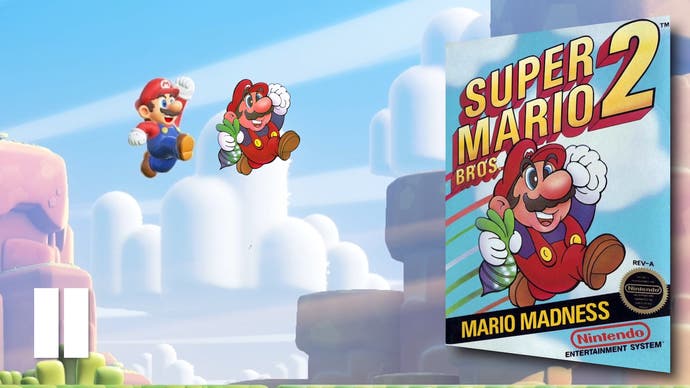
What do I mean? Well, the designers clearly poured a lot of time into posing and key frames. When Mario jumps, he assumes a pose reminiscent of classic box art Mario, for instance. They linger on specific poses to achieve this sprite-like feel - Mario has his upward jump pose and then the downward pose. There are subtle, secondary animations happening, but the broad strokes rely on these specific poses - poses which kind of mimic Super Mario World.
The world map demonstrates another key concept - when running around, Mario's running animation is fluid, but the game snaps between one of eight cardinal and ordinal directions rather than smoothly rotating the model. This very specifically mimics what you might see in a sprite-based game, where the artist would draw only specific angles, and we see this during normal gameplay animation as well.
In a recent behind the scenes blog Nintendo even shares Mario's model from two different angles highlighting how they manipulate the model to both indicate direction of travel and retain facial expressions.
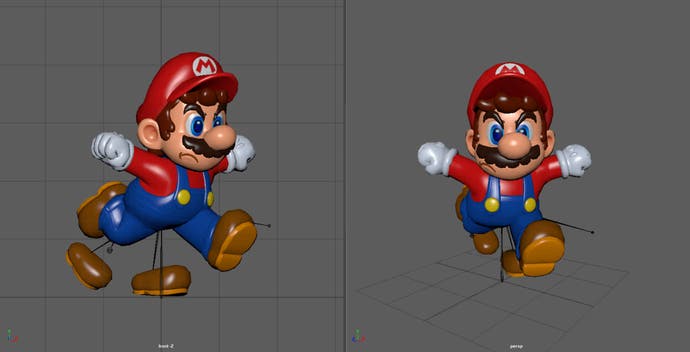
This is all stuff that New Super Mario Bros never managed to accomplish - and, compared side-by-side, Mario's pose in Wonder feels like key art whereas in Mario U, he carries a somewhat limp appearance. The animations there lack specific poses to accentuate Mario's movement. Combined with the increased momentum in the New Super Mario series, it helps explain why that game feels heavy and sluggish compared to Super Mario Wonder. The devil is in the details.
The detail in the animation goes way beyond just Mario, however - the enemies and other characters also exhibit a range of expressions. Both Mario and his foes now use eye tracking to glare at each other as you run through the stage and enemies can even react to Mario's actions - when Mario lands on a Goombrat, his buddy reacts with a terrified expression knowing a similar fate awaits him.
These reactions all lend the game a greater sense of personality - and that includes the talking flowers which pop up all over the world, reacting to Mario's actions. It's a fun little addition that changes the feel of the game in a positive way.
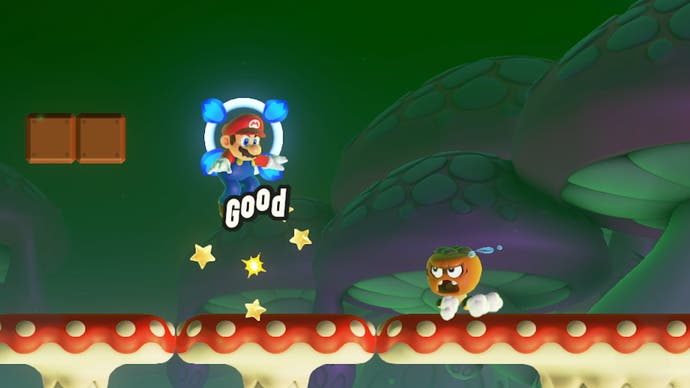
Beyond its principal characters, the background visuals in Super Mario Wonder are also impressive - and a lot of that success stems from the development team breaking away from Mario tradition.
During the early days of Mario, the series evolved with each new installment, embracing new and increasingly abstract shapes and design elements. Super Mario Wonder feels like a return to these days, embracing a visual design language that feels remarkably fresh for the series.
It's all about shapes and colors - the primary colors of the New series gives way to a whole new range of hues. The bright purples, burnt oranges and deep greens really pop. Scenes are full of life with blowing particles and effects. Levels often boast unusual geometric shapes and designs too. Parallax scrolling has also been ramped up significantly, with multiple independent layers scrolling at different rates, enhancing the depth of every scene.
Every level is a piece of art with a hand-crafted feel - it no longer feels like an extension of the older games, as was the case with the New Super Mario Bros series. Instead, the team seems to have had the confidence to build something new and different that still feels authentically Mario.
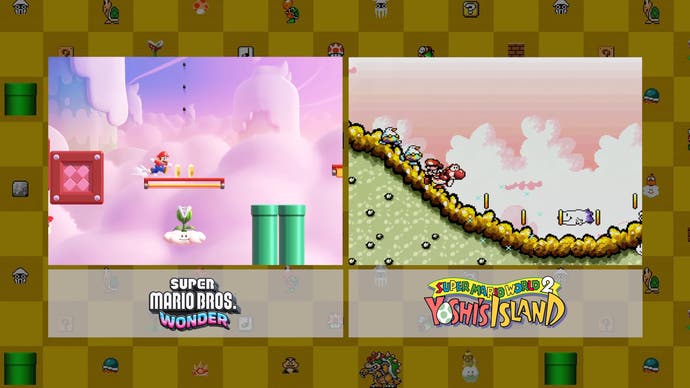
So what about the tech powering it? Well, firstly, from what the ever-reliable OatmealDome has deduced, Mario Wonder is derived from the ModuleSystem tools and technology powering Tears of the Kingdom and Splatoon 3. More insight would be required to understand how this is modified to fit each project, but there's little doubt that it works exceptionally well here.
Wonder may be a 2D game at heart, but it boasts a complex animation system and huge numbers of bespoke objects per scene. Unlike Tears of the Kingdom and Splatoon 3 though, Wonder delivers exceptionally good image quality - one of the best we've seen from Nintendo, due in part to the selected style. The game runs at 1080p native in docked mode and 720p in portable. It does use dynamic resolution scaling, which can drop to 864p (80 percent of 1080p) - but this is relatively uncommon and usually only applies to the 3D overworld map.
There are some nifty technical tricks here too, including shadows projected from dynamic objects, suitably-cartoony particle effects and some mind-bending stage transformations - all running at a near-flawless 60fps. I say near flawless because there were occasional hiccups when transitioning into a level, but this never seems to impede gameplay and the overall experience feels solid. I'd expect no less from a side-scrolling Mario game, but it's nice to confirm it.
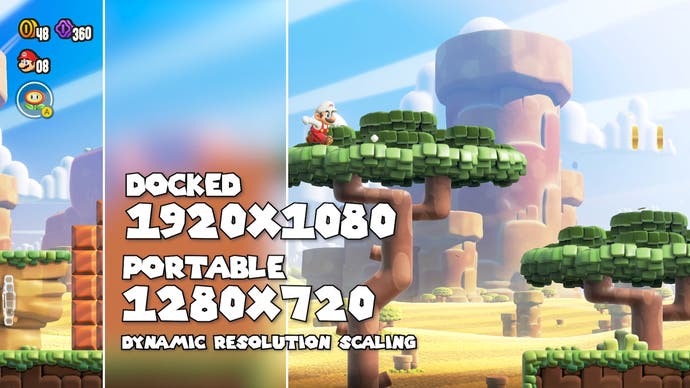
To recap then, Mario Wonder's largest improvements stem from a reduction in character momentum, superior animation and posing, and beautifully crafted stages and expressive enemies. It all coalesces into something superb. It is my opinion that Mario Wonder perfectly nails these two design pillars - great control and core mechanics plus beautiful visuals that run smoothly.
That leaves us with the remaining two criteria: level design and sound. I'd like to upset the order and start with audio because I really feel this is so critical to any great platform game - a boring (or worse, annoying) soundtrack can absolutely drag down any platform game.
Great music can enhance the sensation of action, build atmosphere and strengthen your feelings on a game. Music is emotional but also personal - which means not everyone will necessarily agree, but hear me out.
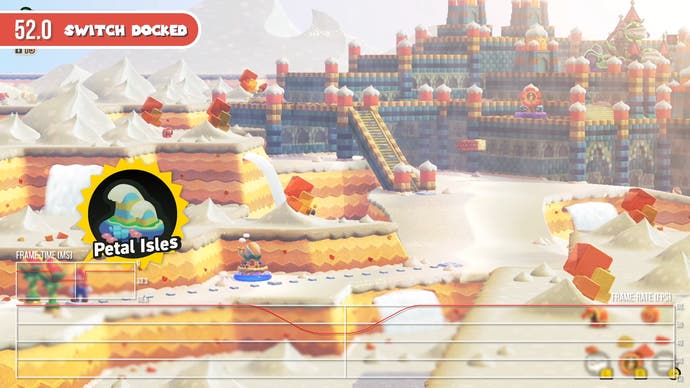
New Super Mario Bros is notorious for its uninspired music, but there are really two problems with it. Firstly, the melodies themselves, while not necessarily bad, just aren't that interesting or varied. The other problem lies in the instrumentation - the samples used in creating the tracks themselves. It does not sound good to my ears.
By comparison, Mario Wonder sounded good from the first trailer, and my excitement increased when it became apparent that Koji Kondo himself was involved with the sound production this time. So what's changed?
Super Mario Wonder does two things - firstly, the compositions themselves are excellent - they feel fresh, like the visuals, but still suitably Mario. The more significant change, however, is the instrumentation - and this is critical.
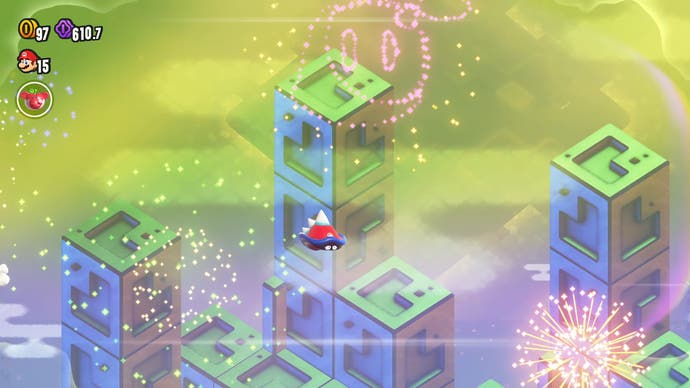
The interesting sample choices and compelling composition of 1990's Super Mario World appeal to me much more than the music of 2012's New Super Mario U; I find the latter to have more sedate instrument selection and pacing that doesn't really grab the player's attention. Wonder's first stage, by comparison, sounds much more pleasing, with more organic and richer sample choices. It's a great melody that sticks with you too.
The sound in Super Mario Wonder alos feels more dynamic this time, with themes that more closely follow the action - the Wonder Seed mechanic, for instance, requires a shift in the music to aid the action.
Moreover, the sound team also made the decision to re-do all the key sound effects. This used to be the case with every new Mario game back in the 80s and 90s, but eventually Nintendo settled on a specific sound that the New Super Mario games mostly stuck to for travelling through pipes, shooting a fire ball or jumping. All of these are refreshed in Mario Wonder, lending the game a new energy.

This is also the first Mario game in decades without Charles Martinet taking the lead, but Mario still feels familiar - it's the rest of the voices that stand out as new. Whether they're actually spoken lines or something else entirely, it's good stuff.
All this is to say that I feel Nintendo has done a remarkable job completely reinvigorating the sound of 2D Mario - as far as that design pillar is concerned, they nailed it.
That brings us to our final topic - level design. Once you've nailed control, visual design and audio, you need a suitable playground in which to enjoy them, and that's where level design comes into play.
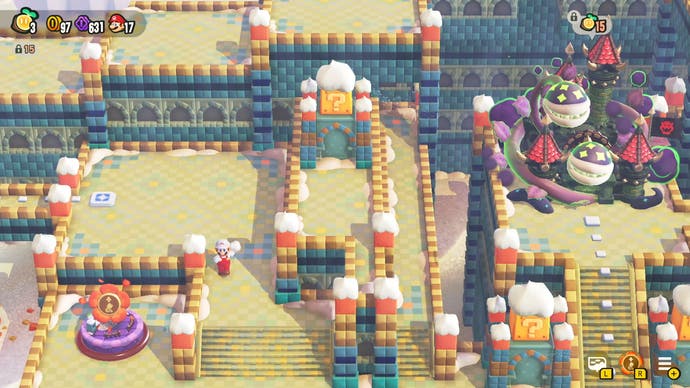
To be fair to the New Super Mario games, level design was not a problem there and, by Mario U, I'd say the level design was generally of a high standard. Super Mario Wonder, however, pushes things forward in a few key areas.
Firstly, the world map itself, which has been a staple of classic Mario dating back to Super Maro 3. Nintendo has played with the concept over the years, but Wonder has my favorite take on it since Super Mario World. Basically, your goal is ever-present, right in the middle of the world map, and you'll spend the game clearing the surrounding worlds. The map features a mix of fixed paths and freeform areas. Some of these areas almost feel like mini-dungeons unto themselves - like the desert palace you slowly unlock while playing through the world.
The actual worlds and levels within are exciting due to a shift in theme - while some of the main themes are retained, it no longer feels like you're just visiting grass, sand, water and lava worlds. The Shining Falls is a perfect example, with its angular peaks and gleaming waterfalls. It doesn't really fit the typical Mario level archetype, which is brilliant.

Aside from the theme, however, the actual level designs fairly exude creativity, with many levels offering completely bespoke challenges - one-off ideas that may not appear anywhere else in the game.
This is enhanced further by the Wonder Seed mechanic - the game world is gated by Wonder Seeds and, while there are multiple ways to gather them, most levels feature a somewhat-hidden seed. Collect it and this initiates a complete transformation. From the very first stage, where the pipes come alive and things just start moving in every direction, you know you're in for a treat.
Other examples include a stampede that sends you flying above the clouds, sudden-onset enemy gigantism, invincibility stars raining from above, a darkened long Mario silhouette stage, heck, there's even a quiz show at one point. Don't worry, though, I'm genuinely just scratching the surface here - with Wonder Seeds filling nearly every main level, there are countless more to enjoy. You haven't seen anything yet.

It's this level of creativity that really sold me on the game - the constant feeling of surprise, of having your expectations exploded once again. It's the kind of game where, upon finishing a level, you feel the urge to go tell a friend about what you've just played. It's that good.
It's also where this piece comes from - I needed a place to just share my thoughts on this experience. Mario Wonder is not just a great game, but it's a game that actually lifted my mood and reminded me what I enjoy about games in the first place.
It also demonstrates what's possible on low-spec, "outdated" hardware. Wonder does not push any technical boundaries, but it shows the benefits of perfectly focusing on a target and ensuring that you nail it.
